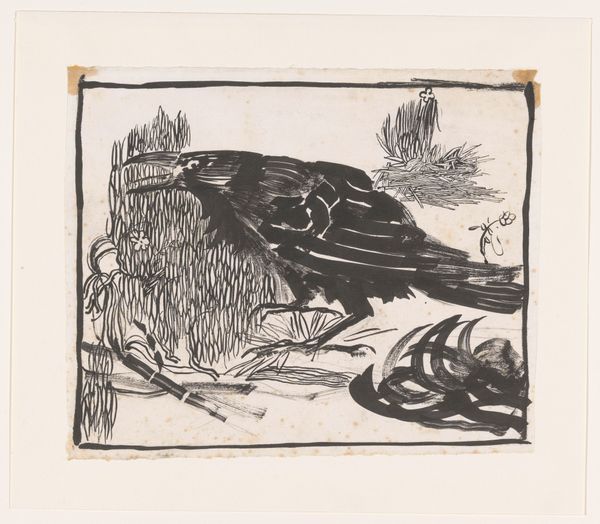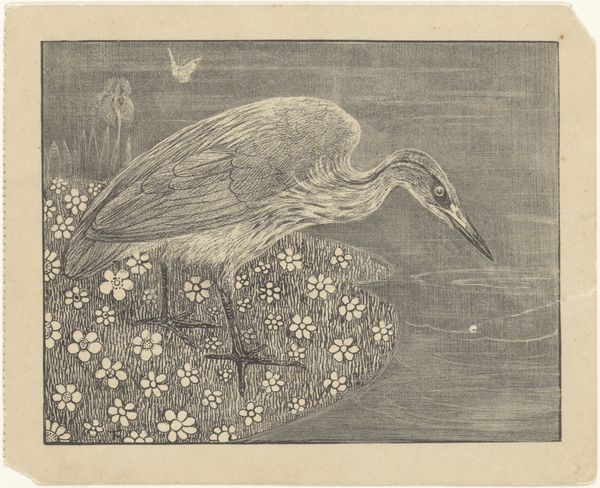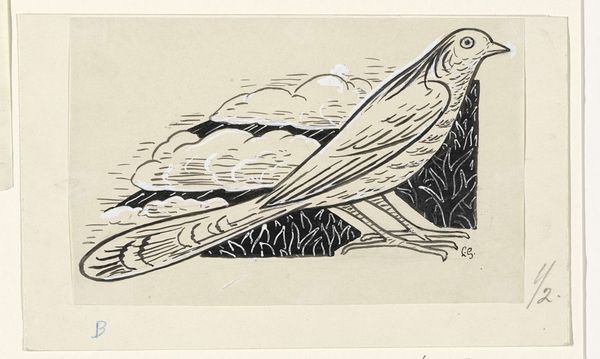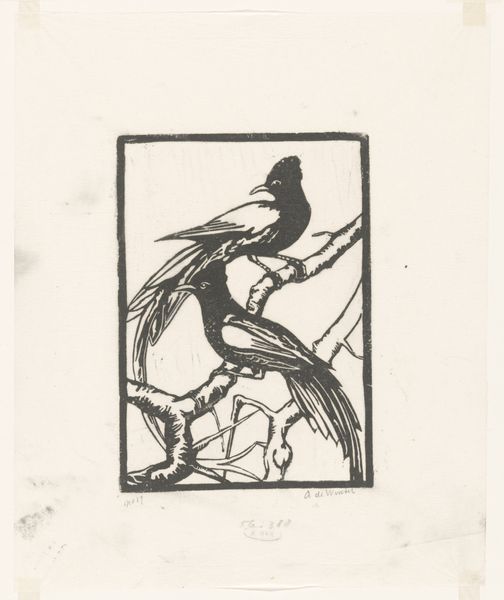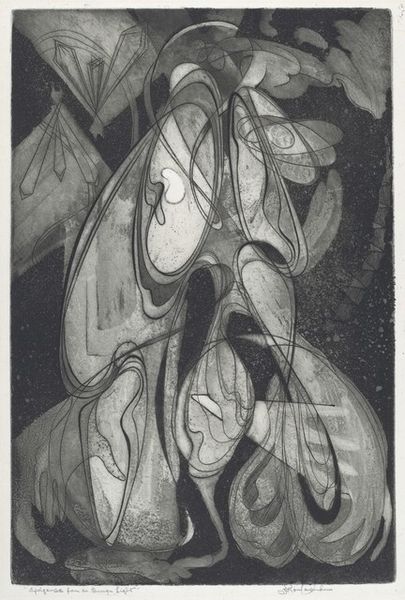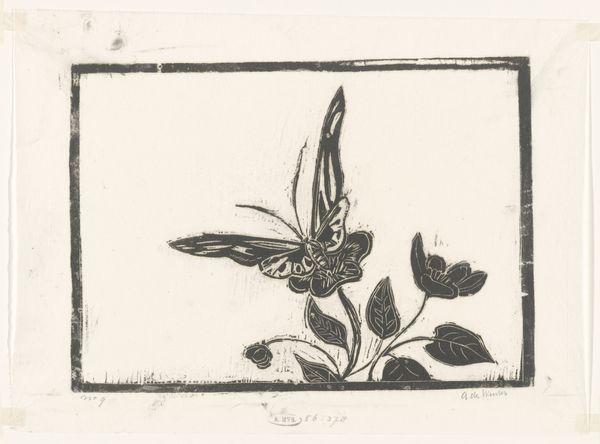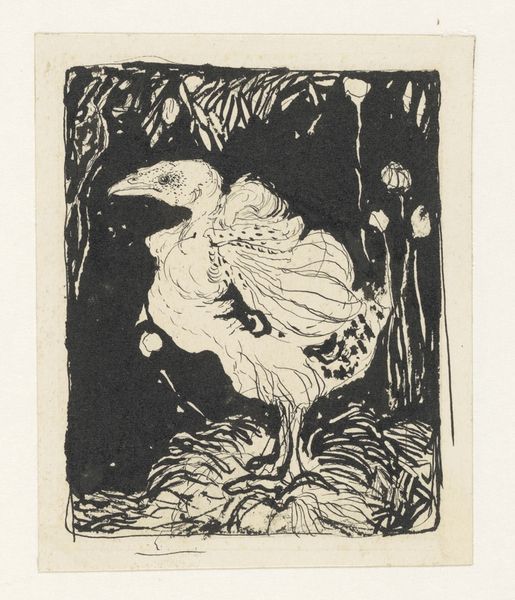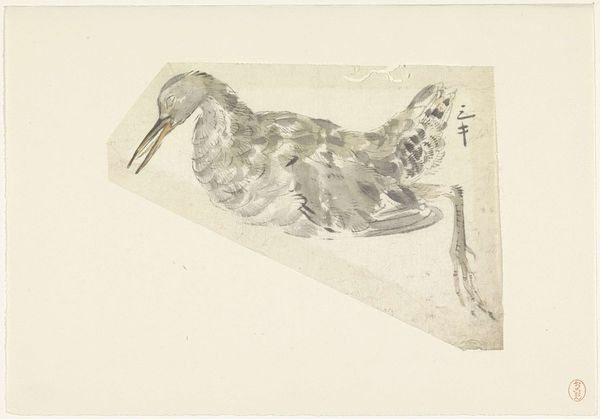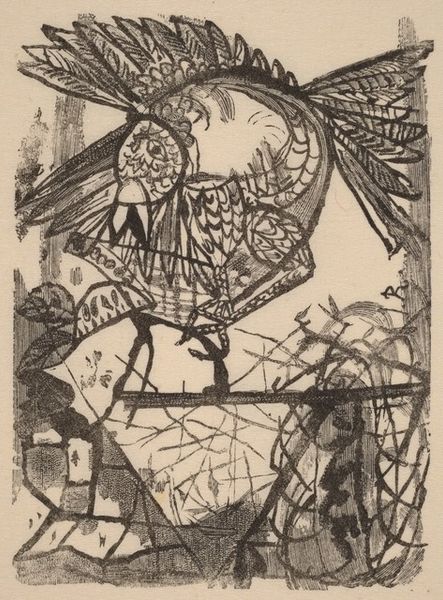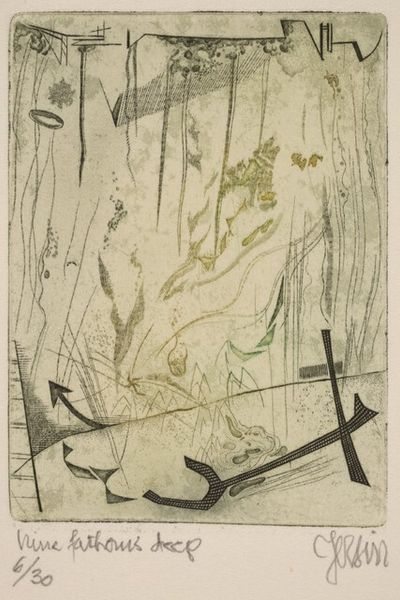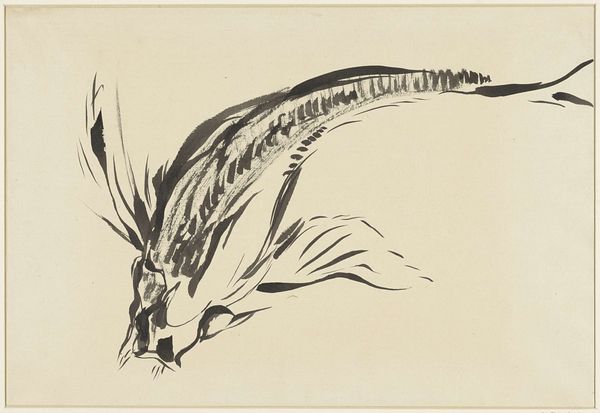
print, ink
#
abstract-expressionism
# print
#
ink
#
abstraction
Copyright: National Gallery of Art: CC0 1.0
Editor: So this is "The Purple Claw," a 1952 ink print by Gabor Peterdi, showcasing some abstract expressionism. The angular shapes create a really striking visual tension for me. How do you interpret this work? Curator: The "claw" suggests a gesture, a holding or seizing, doesn't it? The symbolic weight of color here is crucial; purple often bridges the earthly and the spiritual. This "claw" shape resembles a crescent moon, an ancient symbol, which then is holding what appears to be natural elements like trees. I would ask you, how does this contrast create meaning for you? Editor: It creates a real sense of mystery. It is as if the claw is guarding or revealing something at the same time. The organic forms behind it remind me of dreamscapes, almost surreal. Curator: Peterdi's abstract expressionism isn’t merely about chaos. See how the textured lines mimic organic processes. It may not just be about seizing, it could be about a transformational grasp – taking hold of inner emotions and projecting them onto the external world, how does that thought sit with you? Editor: That makes a lot of sense, this print resonates a lot with these inner struggles! I didn't consider the element of transformation before. Curator: It makes me think that cultural memory lives and transforms through visual symbols, and abstraction gives them room to breathe and to become internalized. Editor: Looking at the artwork now, it does open new ways to express deep emotion. I appreciate learning to look at art through symbolic sight!
Comments
No comments
Be the first to comment and join the conversation on the ultimate creative platform.
